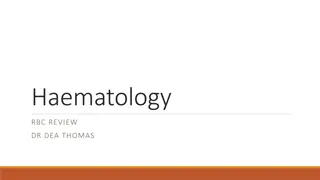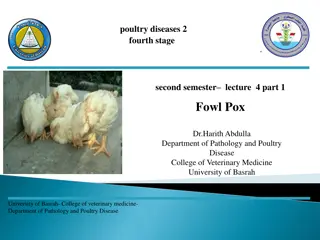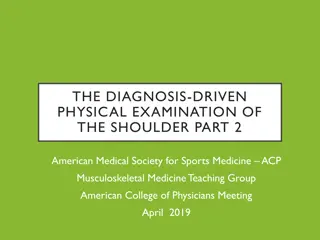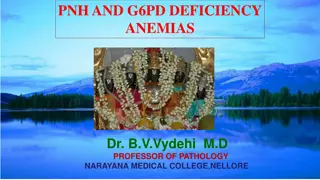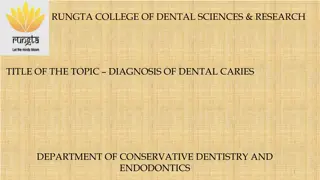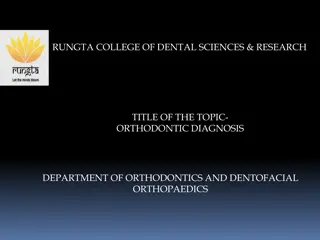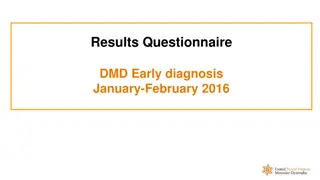Understanding Hypochromic Anemias: Background, Diagnosis, and Key Findings
Anemia is characterized by a decrease in hemoglobin levels below normal, leading to various symptoms and signs. This article explores the background, definition, and causes of hypochromic anemias, along with a diagnostic algorithm and key laboratory findings essential for diagnosis. Clinical features, symptoms, and specific signs associated with different types of anemia are also discussed, providing valuable insights for healthcare professionals.
Download Presentation

Please find below an Image/Link to download the presentation.
The content on the website is provided AS IS for your information and personal use only. It may not be sold, licensed, or shared on other websites without obtaining consent from the author. Download presentation by click this link. If you encounter any issues during the download, it is possible that the publisher has removed the file from their server.
E N D
Presentation Transcript
Anemia 3ed year Ass. Prof. Abeer Anwer Ahmed
Objectives Explain background, definition and etiology of hypochromic anemias Outline diagnostic algorithm of hypochromic anemias Identify key laboratory findings to diagnose hypochromic anemias
Anemia This is defined as a reduction in the haemoglobin concentration of the blood below normal for age and sex. typical values would be : -less than 135 g/L in adult males and -less than 115 g/L in adult females . -From the age of 2 years to puberty, less than 110 g/L -newborn infants have a high haemoglobin level, 140 g/L is taken as the lower limit at birth
Clinical features of anaemia The presence or absence of clinical features can be considered under four major headings: 1. Speed of onset Rapidly progressive anaemia causes more Symptoms 2. Severity Mild anaemia often produces no symptoms or Signs 3. Age The elderly tolerate anaemia less well than the young because normal cardiovascular compensation is impaired. 4. Haemoglobin O2dissociation curve :rise in 2,3 DPG in the red cells and a shift in the O2 dissociation curve to the right so that oxygen is give up more readily to tissues.
Symptoms shortness of breath, particularly on exertion, weakness, lethargy, palpitation and headaches. In older subjects, symptoms of cardiac failure, angina pectoris or intermittent claudication or confusion may be present. Visual disturbances because of retinal haemorrhages may complicate very severe anaemia, particularly of rapid onset
Signs These may be divided into: general and specific. General signs include pallor of mucous membranes or nail beds, which occurs if the haemoglobin level is less than 90 g/L A hyperdynamic circulation may be present with tachycardia, a bounding pulse, cardiomegaly and a systolic flow murmur especially at the apex. Particularly in the elderly, features of congestive heart failure may be present
Specific signs are associated with particular types of anaemia, e.g. koilonychia (spoon nails) with iron deficiency jaundice with haemolytic or megaloblastic anaemias. leg ulcers with sickle cell and other haemolytic anaemias. bone deformities with thalassaemia major. The association of features of anaemia with excess infections or spontaneous bruising suggest that neutropenia or thrombocytopenia may be present, possibly as a result of bone marrow failure.
Pallor of the conjunctival mucosa in patient with severe anaemia
Classification and laboratory findings in anaemia The most useful classification is that based on red cell indices(MCH, mean corpuscular haemoglobin; MCV, mean corpuscular volume.) and divides the anaemia into: - microcytic -normocytic -and macrocytic
Morphological Classification Anemia Macrocytic Normocytic Microcytic Megaloblastic Non- Genetic Anomaly IDA megaloblastic Hepatic disease Drug-induced .1 .2 Vitamin B12 deficiency Folic acid deficiency .1 Sickle cell Thalassemia .1 .2 Recent blood loss Hemolysis Bone marrow failure Anemia of chronic disease .1 .2 .3 .4 anemia .2 Hypothyroidism Reticulocytosis .3 .4
Iron deficiency anemia Clinical features When iron deficiency is developing, the reticuloendothelial stores (haemosiderin and ferritin) become completely depleted before anaemia occurs ( the patient may show the general symptoms and signs of anaemia and also : a painless glossitis, angular stomatitis, brittle, ridged or spoon nails (koilonychia) and unusual dietary cravings (pica). In children, iron deficiency is particularly significant as it can cause irritability, poor cognitive function and a decline in psychomotor development.
Causes of iron deficiency Chronic blood loss Uterine Gastrointestinal, e.g. peptic ulcer, oesophageal varices, aspirin (or other non steroidal anti inflammatory drugs) ingestion, gastrectomy, carcinoma of the stomach, caecum, colon or rectum, hookworm, schistosomiasis, angiodysplasia, inflammatory bowel disease, piles, diverticulosis Rarely, haematuria, haemoglobinuria, pulmonary haemosiderosis, self inflicted blood loss Increased demands Prematurity Growth Pregnancy Erythropoietin therapy Malabsorption Gluten induced enteropathy, gastrectomy, autoimmune gastritis Poor diet A major factor in many developing countries but rarely the sole cause in developed countries
Blood film of IDA: Hypochromic microcytic RBCs with occational target cells and pencil shape poikelocyte
Anaemia of chronic disorders One of the most common anaemias occurs in patients with a variety of chronic inflammatory and malignant diseases The characteristic features are: 1 Normochromic, normocytic or mildly hypochromic (MCV rarely <75 fL) indices and red cell morphology. 2 Mild and non progressive anaemia (haemoglobin rarely <90 g/L) the severity being related to the severity of the disease. 3 Both the serum iron and TIBC are reduced. 4 The serum ferritin is normal or raised. 5 Bone marrow storage (reticuloendothelial) iron is normal but erythroblast iron is reduced
Causes of the anaemia of chronic disorders Chronic inflammatory diseases Infections (e.g. pulmonary abscess, tuberculosis, osteomyelitis, pneumonia, bacterial endocarditis) Non infectious (e.g. rheumatoid arthritis, systemic lupus erythematosus and other connective tissue diseases, sarcoidosis, inflammatory bowel disease, liver disease) Malignant diseases Carcinoma, lymphoma, sarcoma
The pathogenesis of ACD appears to be related to: -decreased release of iron from macrophages to plasma because of raised serum hepcidin levels. - reduced red cell lifespan . -an inadequate erythropoietin response to anaemia caused by the effects of cytokines such as IL 1 and tumour necrosis factor (TNF) on erythropoiesis
Sideroblastic anaemia This is a refractory anaemia defined by the presence of many pathological ring sideroblasts in the bone marrow ring sideroblasts: are abnormal erythroblasts containing numerous iron granules arranged in a ring or collar around the nucleus instead of the few randomly distributed iron granules There is also usually erythroid hyperplasia with ineffective erythropoiesis. Sideroblastic anaemia is diagnosed when 15% or more of marrow erythroblasts are ring sideroblasts.
Ring sideroblasts with a perinuclear ring of iron granules in sideroblastic anaemia.
Classification of sideroblastic anaemia Hereditary X chromosome linked ALA S mutation or rarely with spinocerebellar degeneration and ataxia Usually occurs in males, transmitted by females; also occurs rarely in females Other rare types Acquired Primary Myelodysplasia (refractory anaemia with ring sideroblasts) ALA S, aminolaevulinic acid synthase.







